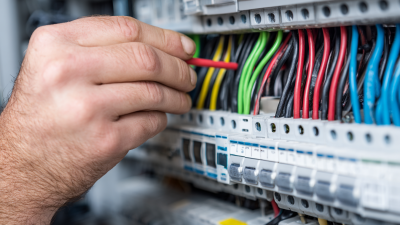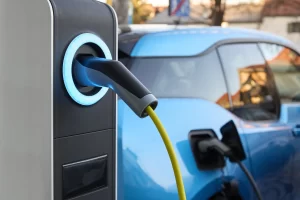Exploring the Role of Cable Suppliers in Sustainable Energy Solutions
In the quest for sustainable energy solutions, cable suppliers play a pivotal role that often goes unnoticed. As the demand for renewable energy sources such as wind, solar, and hydroelectric power surges, the importance of reliable and efficient transmission systems becomes paramount. Cable suppliers are integral to this infrastructure, providing the necessary materials and technology that enable energy to be harnessed, transported, and utilized effectively. This article delves into the various ways in which cable suppliers contribute to the sustainability efforts within the energy sector, highlighting their innovations, collaborations, and the challenges they face. By exploring how these key players are adapting to changing energy demands and environmental regulations, we can gain a deeper understanding of their crucial role in building a resilient and eco-friendly energy future.

The Impact of Cable Suppliers on Renewable Energy Infrastructure
The role of cable suppliers in renewable energy infrastructure is crucial as we transition toward more sustainable energy solutions. High-quality, efficient cables are essential for the transmission of electricity generated from renewable sources such as wind and solar. These cables must be durable and capable of withstanding environmental challenges while ensuring minimal energy loss. As we enhance our renewable infrastructure, the selection of the right cable suppliers can significantly influence the overall efficiency and reliability of energy systems.
Tips: When choosing a cable supplier, consider their experience in the renewable sector and the range of products they offer. Look for suppliers who emphasize environmentally friendly materials and manufacturing processes, as this can further enhance the sustainability of your energy projects. Additionally, prioritize suppliers with a strong track record in handling large-scale renewable projects, as their expertise can provide valuable insights and support.
As demand for renewable energy continues to rise, cable suppliers must innovate to meet the industry's changing needs. This includes not only developing cables that can handle higher capacities but also integrating smart technologies that contribute to smarter energy management systems. By aligning with forward-thinking cable suppliers, energy producers can bolster their infrastructure and ensure a more sustainable energy future.

Innovative Cable Technologies for Efficient Energy Transmission
In the pursuit of sustainable energy solutions, innovative cable technologies play a critical role in enhancing the efficiency of energy transmission. Advanced cable materials, such as high-temperature superconductors and composite cables, are revolutionizing the way electricity is transported over long distances. According to a report by the International Energy Agency (IEA), adopting these technologies could reduce energy losses by up to 40%, significantly improving the overall sustainability of energy systems. For example, superconducting cables can transmit power with virtually no resistance, thereby maximizing the efficiency of renewable energy resources such as wind and solar.
Tip: When evaluating cable suppliers for sustainable projects, consider their commitment to innovation and the use of eco-friendly materials. Collaborating with suppliers who prioritize research and development can lead to better energy transmission solutions.
Recent advancements also highlight the importance of smart cables equipped with sensors that monitor grid health and performance in real-time. These smart technologies are essential for integrating renewable energy sources into existing power grids, ensuring stability and reliability. According to a report by the Global Energy Interconnection Development and Cooperation Organization, smart cables can facilitate up to a 30% improvement in grid performance, showcasing their potential to contribute to a more resilient energy infrastructure.
Tip: Look for suppliers that offer smart cable solutions and track record in integrating renewable energy technologies to enhance efficiency and sustainability.
Exploring Innovative Cable Technologies for Efficient Energy Transmission
This chart displays the efficiency of various cable technologies used in sustainable energy solutions. The data represents the efficiency percentage and environmental impact reduction of different cable types.
Sustainability Practices among Cable Manufacturers
The cable manufacturing sector is increasingly recognizing the importance of sustainability practices as part of its operational ethos. With the global shift towards renewable energy sources like solar, wind, and hydropower, cable suppliers are finding new growth opportunities in developing sustainable materials. The demand for cables designed for electric vehicles (EVs) is skyrocketing, and manufacturers are responding by innovating recyclable and biodegradable materials. This not only addresses environmental concerns but also positions companies favorably in a market projected to grow significantly over the next several years.
In addition, companies are ramping up their manufacturing capabilities to meet the rising demand for sustainable products. For instance, a major player in the cable industry has recently inaugurated a second facility to cater to the burgeoning market in India. This expansion reflects a broader trend where cable manufacturers are adopting comprehensive sustainability practices, which are not only beneficial for the environment but also enhance their competitive edge. As these firms secure funding tied to their sustainability efforts, they are paving the way for a future that aligns profitability with ecological responsibility.
Collaborations between Cable Suppliers and Renewable Energy Developers
The collaboration between and renewable energy developers is a pivotal aspect of creating sustainable energy solutions. As the renewable energy sector continues to grow, the demand for high-quality, durable, and environmentally-friendly cables intensifies. Cable suppliers are stepping up to meet this demand by partnering with developers to design custom solutions that enhance energy efficiency and reliability. These partnerships ensure that energy generated from renewable sources is transmitted seamlessly and effectively, contributing to lower carbon footprints and increased energy independence.

Tips for cable suppliers include investing in research and development to innovate cable materials and designs that meet the industry's changing needs. Additionally, establishing strong communication channels with renewable energy developers can facilitate the exchange of valuable information, leading to better project outcomes. Collaborating on large-scale projects also opens opportunities for joint ventures, increasing both parties' market competitiveness while promoting sustainability.
Renewable energy developers can enhance their projects by selecting cable suppliers who prioritize eco-friendly practices and materials. Engaging with suppliers who are certified in sustainable manufacturing can lead to more resilient infrastructure, ultimately benefiting the environment. Working together, cable suppliers and energy developers can pave the way for a greener future, showcasing the integral role of their partnership in advancing sustainable energy solutions.
Future Trends in Cable Supply for Sustainable Energy Systems
The future trends in cable supply for sustainable energy systems are poised to undergo significant transformations as the global energy landscape evolves. According to the International Energy Agency (IEA), renewable energy sources are expected to account for nearly 65% of global electricity generation by 2030. This shift necessitates robust and innovative cable solutions that can support the transmission of high-voltage electricity from renewable sources such as wind and solar farms to urban centers. Advanced materials, such as cross-linked polyethylene (XLPE) and superconducting cables, are becoming increasingly prevalent due to their efficiency and capacity to reduce energy losses during transmission.
Moreover, the demand for smart grid technology is transforming the cable supply market. Research by Navigant Research indicates that investments in smart grid infrastructure could exceed $100 billion by 2025. As utilities adopt more integrated and automated systems, cables will need to be equipped with enhanced monitoring and communication capabilities. This progression towards smart cabling not only improves the reliability and efficiency of energy delivery but also aligns with sustainability goals by minimizing downtime and optimizing energy distribution, thus supporting the overall transition to cleaner energy solutions.
Related Posts
-

Understanding Multi Conductor Cables: Essential Tips for Effective Electrical Wiring
-

Understanding Lead Cables: Essential Insights for Safe Electrical Installations
-

Exploring the Advantages of 4 Core Cable in Modern Electrical Installations and Its Impact on Efficiency
-

Exploring the Essential Role of Power Wires in Modern Electrical Systems
-

Understanding the Benefits and Uses of Romex Wire in Modern Electrical Installations
-

The Ultimate Guide to Understanding Different Wire Connector Types for Your Projects
